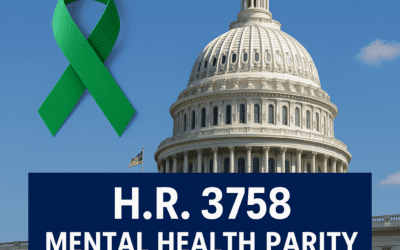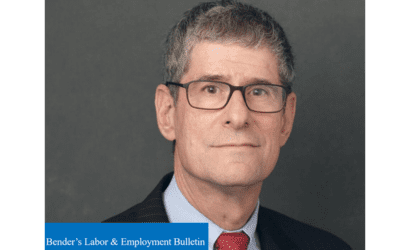An aspect of Employee Retirement Income Security Act benefits litigation that distinguishes it from other civil litigation is that discovery in ERISA cases is only stingily granted. Although, as will be shown below, that appears to be changing.
There is no statutory basis for limiting discovery in ERISA cases, nor do the Federal Rules of Civil Procedure prescribe any such restriction. According to the ERISA statute, benefit claimants may bring a civil actionto recover benefits due under an employee benefit plan.[1]
The FRCP apply to all civil actions,[2] thus making the discovery rules[3] applicable to all federal civil cases subject to certain enumerated exceptions, none of which include ERISA.
Indeed, the FRCP grant civil litigants broad discovery rights subject only to the following:
Parties may obtain discovery regarding any nonprivileged matter that is relevant to any party’s claim or defense and proportional to the needs of the case, considering the importance of the issues at stake in the action, the amount in controversy, the parties’ relative access to relevant information, the parties’ resources, the importance of the discovery in resolving the issues, and whether the burden or expense of the proposed discovery outweighs its likely benefit. Information within this scope of discovery need not be admissible in evidence to be discoverable.[4]
For many years following ERISA’s enactment in 1974, discovery in ERISA benefit claims litigation was not curtailed since ERISA litigation was generally conducted in the same manner as any other breach of contract action.[5]
However, things began to change after the U.S. Supreme Court’s 1989 issuance of Firestone Tire & Rubber Co. v. Bruch,[6] which rejected a contract law approach to ERISA benefits litigation as urged by the solicitor general[7] in favor of trust law, which permitted courts to apply a deferential standard of review in adjudicating ERISA disputes.
It did not take long thereafter for ERISA litigation to become transformed into a regime that resembles administrative law. The initial ruling that effected the transformation of ERISA litigation was Perry v. Simplicity Engineering,[8] a disability benefits dispute, where the U.S. Court of Appeals for the Sixth Circuit in 1990 pronounced that judicial review of ERISA benefit cases is “based on the record before the administrator.”[9]
Although there was initially some resistance, especially in ERISA cases heard under the de novo standard of review, Perry proclaimed that ERISA was intended to provide “a method for workers and beneficiaries to resolve disputes over benefits inexpensively and expeditiously,”[10] and maintained, without offering any supporting rationale, that if courts permitted the introduction of evidence not previously presented to plan administrators, “employees and their beneficiaries would receive less protection than Congress intended.”[11] Seeking a middle ground, in 1993 the U.S. Court of Appeals for the Fourth Circuit in Quesinberry v. Life Insurance Co. of North America[12] prescribed exceptional circumstances that would permit the court to consider additional evidence in cases adjudicated under the de novo judicial review standard, such as:
claims that require consideration of complex medical questions or issues regarding the credibility of medical experts; the availability of very limited administrative review procedures with little or no evidentiary record; the necessity of evidence regarding interpretation of the terms of the plan rather than specific historical facts; instances where the payor and the administrator are the same entity and the court is concerned about impartiality; claims which would have been insurance contract claims prior to ERISA; and circumstances in which there is additional evidence that the claimant could not have presented in the administrative process.[13]
For review under the arbitrary and capricious standard, though, which encompasses a broad swath of ERISA litigation, the U.S. Court of Appeals for the Seventh Circuit pronounced in Perlman v. Swiss Bank Corp. in 1999[14] that “[d]eferential review of an administrative decision means review on the administrative record.”[15] Subsequently, barring all discovery became the general rule in ERISA litigation.
Things have changed. The Supreme Court’s 2008 decision in Metropolitan Life Insurance Co. v. Glenn[16] opened the door to discovery based on its finding that conflicts of interest arise when the same party both administers and funds benefit payments. That holding made it inevitable that plaintiffs would seek discovery to determine the nature of the conflict and the extent to which the conflict may have infected the claim decision.
For example, the U.S. District Court for the Central District of California observed in Toven v. Metropolitan Life Insurance Co. in 2007: “The Court is at a loss to understand how evidence of a claims’ adjuster’s credibility, or of that of the consultant, can be determined solely from the administrative record.”[17]
It wasn’t long thereafter before the U.S. District Court for the Southern District of California in Klein v. Northwestern Mutual Life Insurance Co.,[18] enumerated a list of topics relating to conflict that it considered fair game for discovery such as compensation of medical personnel involved in claim determinations, the performance evaluations of claims personnel, statistical information about claim approvals and denials, training materials, and other documents such as claim manuals and guidelines.[19]
The U.S. Court of Appeals for the Ninth Circuit then issued an influential ruling in Demer v. IBM Corp. LTD Plan in 2016,[20] which recognized the financial conflicts affecting the objectivity of so-called independent physician consultants, or IPCs, to benefit plans, pointing out the hundreds of reviews performed by the individual doctors involved in that claim and the significant compensation they each received.
The court recognized that discovery leading to such information
is comparable to conventional approaches to discrediting the testimony of retained experts whose objectivity may be challenged based on, e.g., the number of times he or she has served as an expert in support of a party and the amount of compensation received.[21]
Ultimately, the court concluded:
The magnitudes of these numbers, particularly when combined, raise a fair inference that there is a financial conflict which influenced the IPCs’ assessments, and thus such conflict should be considered as a factor in reviewing MetLife’s decision for abuse of discretion.[22]
The floodgates to discovery have not opened across the country, though. In the Seventh Circuit in 2013, Dennison v. MONY Life Retirement Income Security Plan for Employees,[23] recognized that Glenn should make courts more receptive to considering whether to permit discovery, but without offering specific guidance, the court merely suggested there should be a softening, but not an outright rejection of the typical bar against permitting discovery in cases subject to the arbitrary and capricious standard of review.[24]
Under the de novo standard of judicial review, however, the courts have moved from barring such discovery altogether[25] to permitting broader discovery in relation to medical and vocational consultants hired by employee benefit plans to adjudicate claims.[26]
The Seventh Circuit, which is the only circuit that eschews record reviews under the de novo standard of judicial review and views ERISA litigation under that standard as akin to breach of contract litigation,[27] pronounced this year in Dorris v. Unum Life Insurance Co. of America,[28] “the court can limit itself to deciding the case on the administrative record but should also freely allow the parties to introduce relevant extra-record evidence and seek appropriate discovery.”[29]
While the availability of discovery in ERISA cases has definitely expanded; and the trend continues in support of allowing discovery, the reason there are no uniform rules is that there was never any legitimate basis for curtailing discovery in the first place since the analogy to administrative law was misplaced. ERISA claimants lack the same due process protections afforded in administrative proceedings since claim appeals are no substitute for hearings before administrative law judges.
And as the U.S. Court of Appeals for the Third Circuit observed in Luby v. Teamsters Health, Welfare & Pension Trust Funds in 1991,[30]
Plan administrators are not governmental agencies who are frequently granted deferential review because of their acknowledged expertise. Administrators may be laypersons appointed under the plan, sometimes without any legal, accounting or other training preparing them for their responsible position, often without any experience in or understanding of the complex problems arising under ERISA, and, as this case demonstrates, little knowledge of the rules of evidence or legal procedures to assist them in factfinding.[31]
Consequently, ERISA plan administrators should never have been afforded the same deference as government agencies.
While not every claim is meritorious, a benefit denial in a health insurance claim may result in life-ending consequences, and a wrongful denial of disability benefits could lead to poverty. As in all other civil litigation, discovery is the tool that both parties have available to explore the strengths and weaknesses of the other party’s case. Just because someone is a doctor does not mean that person’s opinion is correct and requires acceptance on its face.
There is a tremendous anomaly in ERISA litigation that makes the need for discovery even more apparent. In 2003, the Supreme Court ruled in Black & Decker Disability Plan v. Nord,[32] that the opinions offered by claimants’ treating doctors are not automatically due deference in employee benefit disputes, but that is exactly the privileged position held by consultants hired by insurance companies that administer health, life and disability benefit claims unless their opinions can be challenged in discovery.
Except for the Seventh Circuit, there are no trials in ERISA benefits cases; and without discovery or cross-examination at trial, there is no basis to challenge adverse benefit determinations. As textual-minded judges continue to question the legitimacy of judicially created doctrines in ERISA litigation,[33] the trend will likely continue in favor of allowing more discovery in ERISA disputes.
Mark DeBofsky is a shareholder at DeBofsky Law.
This article was originally published in Law 360 https://www.law360.com/articles/1285487
The opinions expressed are those of the author(s) and do not necessarily reflect the views of the firm, its clients, or Portfolio Media Inc., or any of its or their respective affiliates. This article is for general information purposes and is not intended to be and should not be taken as legal advice.
[1] 29 U.S.C. § 1132(a)(1)(B).
[2] Federal Rule of Civil Procedure
[3] Federal Rules of Civil Procedure 26 –
[4] Federal Rule of Civil Procedure 26(b)(1).
[5] Moore v. John Hancock, 436 2d 823 (5th Cir. 1971)(regarding life insurance); Justice
[6] Union Carbide, 405 F.Supp. 920 (E.D. Tenn. 1975)(regarding disability benefits). [6] 489 U.S. 101 (1989).
[7] Brief of the United States as Amicus Curiae Supporting Respondents, Firestone Tire & Rubber Co. v. Bruch, 489 U.S. 101 (1988) (No. 87-1054), 1987 U.S. Briefs 1054 LEXIS.
[8] 900 F.2d 963 (6th Cir. 1990).
[9] Id. at 967.
[10] 900 2d at 967 (citing 1974 U.S. Code Cong.& Admin. News 5000). A careful reading of the source, however, reveals that the quotation in Perry related to a proposed administrative hearing system that was never enacted by Congress.
[11] Id.
[12] 987 F.2d 1017 (4th Cir. 1993).
[13] Id. at 1027.
[14] 195 F.3d 975 (7th Cir. 1999).
[15] Id. at 981-82.
[16] 554 U.S. 105 (2005).
[17] 517 F. Supp. 2d 1171, 1173 (C.D. Cal. 2007).
[18] 806 F.Supp.2d 1120 (S.D. Cal. 2011).
[19] 806 F.Supp.2d at 1127-28.
[20] 835 F.3d 893 (9th Cir. 2016).
[21] 835 F.3d at 901.
[22] Id. at 902.
[23] 710 F.3d 741 (7th Cir. 2013).
[24] 715 F.3d at 747.
[25] See, e.g., Polnicky v. Liberty Life Assur.Co. of Boston, 2014 S.Dist.LEXIS 29123 (N.D.Cal. March 5, 2014).
[26] Coffou Life Ins. Co. of N. Am., 2020 U.S. Dist. LEXIS 56661 (D. Ariz. March 11, 2020).
[27] See, Krolnik Prudential Ins. Co., 570 F.3d 841 (7th Cir. 2009).
[28] 949 F.3d 297 (7th Cir. 2020).
[29] Id. at 304.
[30] 944 F.2d 1176 (3d Cir. 1991).
[31] Id. at 1183.
[32] 538 U.S. 822 (2003).
[33] See, DeBofsky, “6th Circ. Ruling Offers Fresh Look at ERISA Exhaustion,” Law 360 (April 24, 2020); available at https://www.law360.com/articles/1264985.






